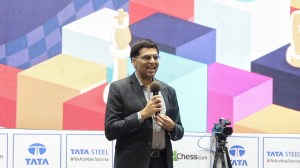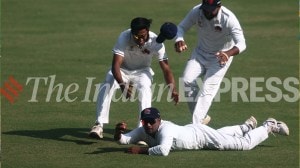China’s shining scalpel
When China made it to the front pages of the newspapers, it used to be in the shape of Comrades Mao and Deng. Or there would be pictures ...

When China made it to the front pages of the newspapers, it used to be in the shape of Comrades Mao and Deng. Or there would be pictures of victims of the Yellow River’s routine excesses. This year, a very different emblem of China is finding premium space in newspapers the world over: the Yuan, the basic unit of the Renminbi, the People’s Currency’. Whether it is actually devalued or not, the fact remains that it has become the most-watched entity in Asia. If anyone still needs to be convinced that China has changed the evidence is right before their eyes every morning.
In 1900, days after the Boxer rising against the foreign presence in China had been savagely suppressed by international’ (read European) troops, Robert Hart sent a communique to the Crown from the British concession in Shanghai. As head of the city’s Maritime Customs Service he was effectively the most important European in China. “A China in arms will be a big power at some future date,” he wrote. “We should see that the China of thefuture might have something to thank us for, not to avenge.”
That China of the future is coming of age today, but not according to Hart’s growth chart of a century ago. This China need not depend on arms to get its way. It has discovered that the Yuan is the most powerful weapon in its arsenal. When China gets obdurate about Tibet, only US neo-Buddhists get upset. When it thinks of devaluing the Yuan, all of Asia trembles. And much of the world besides.
China has always been a large canvas. It has seen the biggest rising in recorded history, the Taiping Rebellion (1850-64), which left 20-30 million dead. On the night of October 16, 1934, it saw the beginning of the most daring military manoeuvre of all time, Mao’s Long March of 6,000 miles. In a certain way World War II, the biggest human conflict ever, began in China with the Japanese aggression. The war was about world Fascism. Japan provided its first example, on Chinese soil, years before the Wehrmacht rolled into Poland. Today, China is ruled by thebiggest political party in the world. It is still working on the large canvas, but now it’s doing it with the calligrapher’s brush.
The Chinese leadership has realised that in the modern age, demands for western-style democracy cannot be suppressed. But if the people have enough in the bank, they may not come up at all. Tiananmen Square had seen and forgotten state excesses — notably during the Cultural Revolution — before the student protest of 1989. The difference was that in 1989 the images were flashed to the whole world. In the meantime, China had opened its markets, set up Special Economic Zones, promoted family-owned businesses (in 1987 there were 20 million) and meshed with the world economy. The Yuan may be a restricted currency, but its influence is global.
As Hart anticipated, China does have a score to settle with the West. Through the last century and well into this one, it has suffered under the foreign yoke. When the Manchu Ch’ing dynasty lost its Heavenly Mandate’, half the Europeannations moved into treaty ports, concessions and compounds’. Eighty towns in mainland China were controlled by the foreign devils’ with the help of local warlords. In 1930, Britain had more trade interests and investments in China than Japan had, and Japan was next door.
In the Great Depression, New York survived Black Tuesday and moved on to the New Deal. California saw the refugee columns of The Grapes of Wrath, but the soup kitchens were a sufficient solution to the problem. In China, every day, thousands died slowly of famine, with no choice at all. As Sun Yat-Sen said, “Other men are the carving knife and serving dish; we are the fish and meat.”
Today, rid of the colossal follies of both Sun’s Kuomintang and Mao’s regime, China is in a position to do some carving of its own. In 1958, at the end of the disastrous First Five Year Plan in which Mao started the collectivisation of farm assets, most people had not seen a Yuan note for months. The principal economic activity of the nation was reducedto looking for scraps of food. Later, in the second phase of the Great Proletarian Cultural Revolution, Mao drove 1.2 million students, professionals and intellectuals out of the towns, in order that they may learn the virtues of tilling the land.
Modern, pragmatic China would never countenance such massive destruction of national resources in the name of ideology. It has realised that money talks louder than Chairman Mao’s speeches. Home to the biggest market and the biggest resource base in Asia, it is ready to consider the profit motive.Today, Japan is China’s biggest bilateral donor. Japan, author of the rape of Kuomintang Nanking, repeated aggressor and brutal conqueror of Manchuria.
Today, China borrows freely from the World Bank. When Silicon Valley screams about piracy in Guangdong, Beijing destroys thousands of cases of pirated CDs with bulldozers to get on the right side of the World Trade Organisation. Contrast this with the story of Shanghai’s Parker pen factory. For 30 years after Mao’sgovernment came to power, it carried on with the tools and dies of its departed European owners, producing cheap imitations of a single product — the Parker 51. Not once did it occur to its party bosses to get an upgrade from the West.
Earlier, China threw money at Africa, hoping to fuel a black revolution. Now, it’s trying to bail out economies nearer home, in Southeast Asia. Because if these export markets lose purchasing power, China will have to devalue the Yuan. It will do this under pressure from traders and manufacturers, the very people whom Mao loved to keep under the constant threat of extermination by vigilante Red Guards. Ideology is no factor now. China has learned that the Yuan can buy more hearts and souls than the little Red Book, once thought to be the most dangerously beguiling piece of intellectual property ever produced.
After Tiananmen, the West’s outrage lasted only a few months. This year, after Bill Clinton’s visit, it is clear that China will soon enjoy the same privileges asJapan does in the West. China does have something to avenge, and one day it will square the account. But it doesn’t have to resort to a weapon as crude as Sun Yat-Sen’s carving knife. It has the bright and shining scalpel of the Yuan.



- 01
- 02
- 03
- 04
- 05




























